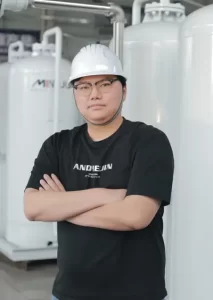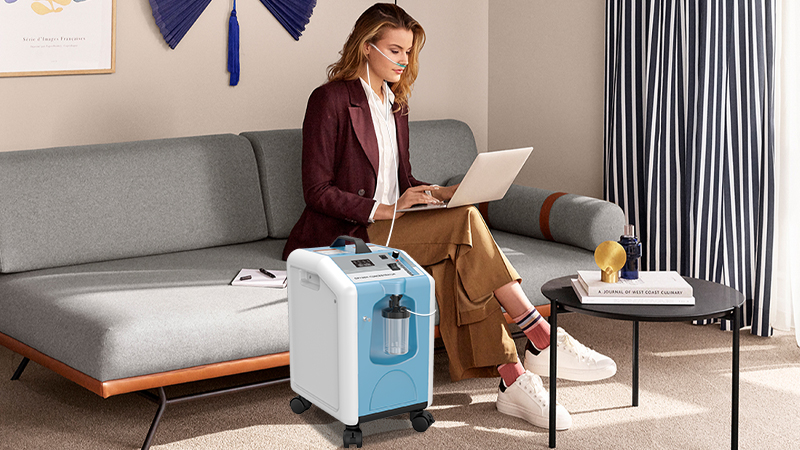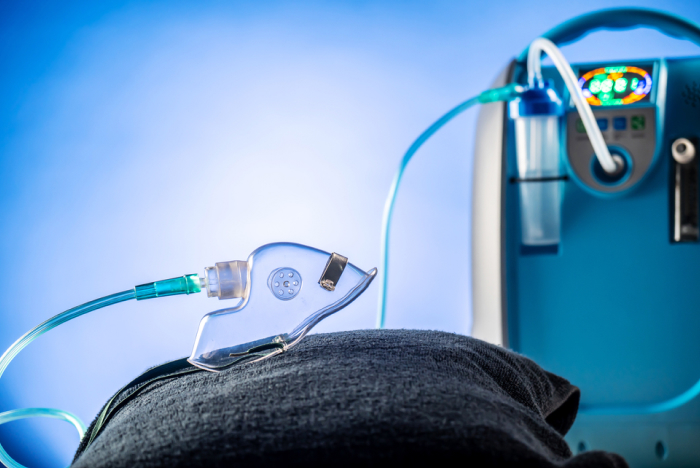Hello, dear readers. In the modern medical world, medical oxygen concentrators are like “guardians” of life, providing valuable help to countless patients who need additional oxygen support. These devices are of various types and have different functions according to different designs and applications. Next, let’s take a deep look at the different types of these devices and their respective applicable scenarios to help you choose the most suitable device and improve everyone’s quality of life and health protection.
Medical oxygen concentrators play a vital role in modern medicine, helping patients get the necessary oxygen support. According to the function and use environment, these devices can be divided into portable, home, hospital, centralized oxygen supply system, high flow, low flow and inhaled oxygen therapy system, etc., which are suitable for home care, home emergency, medical institutions and other scenarios.
Portable oxygen concentrator (home, travel, emergency)
Portable oxygen concentrators are like an “oxygen assistant” on call at any time. They are light and easy to carry, suitable for use at home, travel or in emergency situations. Imagine that when you go out for a trip or go out for a party, the portable oxygen concentrator can be easily put into a backpack without worrying about insufficient oxygen.
Portable oxygen concentrators are characterized by being silent when in operation, as if they are gently caring for your health. They can provide you with a variety of flow options to flexibly respond to different needs. Some models are even equipped with intelligent monitoring systems to keep your family informed of your oxygen levels.
If you are a chronic patient who desires to maintain flexibility in life or a patient who needs to ensure oxygen supply when going out, you can choose this medical oxygen concentrator.
Home oxygen concentrator (home care)
Home oxygen concentrators are simple to operate and user-friendly, and any family member can easily get started. It also has timing and flow adjustment functions, which patients can freely adjust according to their needs. In addition, this medical oxygen concentrator has low maintenance costs and a long service life, which can make home care more worry-free.
Whether it is a chronic disease patient who needs oxygen therapy at home or a patient recovering from surgery, this medical oxygen concentrator is very suitable for use.
Hospital oxygen concentrator (medical institution)
The hospital oxygen concentrator is like the “oxygen center” of the medical team. It is efficient and reliable and can provide the required oxygen for multiple patients. The design of this equipment emphasizes functionality to ensure the safe and stable supply of oxygen in the hospital.
The special use scenario requires it to be able to handle large flow demands and respond quickly at critical moments. In addition to having an advanced monitoring system that can monitor the patient’s oxygen status in real time, it can also be seamlessly connected to the hospital’s oxygen supply pipeline system to ensure supply at any time.
This medical oxygen concentrator is usually provided to patients who need oxygen support in emergency and intensive care.
Centralized oxygen supply system (large medical institutions, operating rooms)
The centralized oxygen supply system is like the “oxygen vein” of the hospital. Through a huge pipeline network, oxygen is delivered to every corner of the hospital. This system ensures that oxygen can be supplied continuously at any time.
This system is amazing. It can provide large-scale and continuous oxygen supply, suitable for high-demand environments such as operating rooms and intensive care units. And its systematic design greatly reduces the dependence on portable oxygen cylinders. It is also equipped with a fault alarm system to ensure timely alarm when there is a problem with the oxygen supply.
Patients in large hospitals who need a continuous oxygen supply have enjoyed the convenience brought by the centralized oxygen supply system.
High-flow oxygen concentrator (intensive care unit ,ICU)
The high-flow oxygen concentrator is like a “lifeline” for critically ill patients, providing sufficient oxygen in critical moments. Its precision design ensures that patients are given the best support when they need it most.
The high-flow oxygen concentrator can provide high-flow oxygen of more than 10 liters/minute to meet the urgent needs of critically ill patients. It also has a real-time adjustment function to respond flexibly according to the patient’s condition. Some models are even equipped with non-invasive ventilation function to further improve the treatment effect.
Patients who need emergency treatment in the intensive care unit usually use this medical oxygen concentrator.
Low-flow oxygen concentrator (daily life)
Low-flow oxygen concentrators are like gentle “oxygen companions”, suitable for patients who need mild oxygen support, helping them to maintain comfortable breathing in daily life.
The flow rate of low-flow oxygen concentrators is generally between 1 and 5 liters/minute, suitable for mild needs. Its simple design and easy operation make it easy for patients and their families to use. It can be used in combination with a nasal cannula or mask to ensure that fresh oxygen is inhaled with every breath.
This medical oxygen concentrator is very friendly to patients with mild dyspnea or at rest.
Inhaled oxygen therapy system (rehabilitation therapy)
The inhaled oxygen therapy system is a multifunctional “treatment assistant” that combines oxygen generation and drug atomization functions, suitable for patients who need drug therapy and oxygen support at the same time.
The inhaled oxygen therapy system can provide oxygen and atomized drugs at the same time, making the treatment effect more significant. It can adjust the oxygen concentration and drug flow to meet the needs of different patients. It is suitable for the treatment of a variety of respiratory diseases, such as asthma, chronic bronchitis, etc.
Chronic patients who need oxygen therapy and drug therapy at the same time can use this medical oxygen concentrator.
Conclusion
The diversity of medical oxygen concentrators enables them to meet the unique needs of different patients. From portable “oxygen assistants” to “oxygen veins” in large hospitals, each type has its unique functions and applicable scenarios. Choosing the right oxygen concentrator can not only improve the quality of life of patients, but also provide timely help at critical moments. When purchasing an oxygen concentrator, patients and their families should consider the use environment, equipment characteristics and personal needs to ensure the best oxygen therapy experience. For more details, please visit our MINNUO Group official website, where we will answer your questions.




